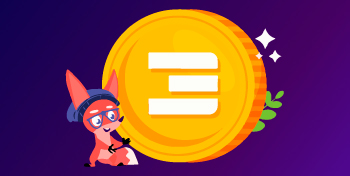Another bout of disagreement in the Bitcoin Cash community continued to affect the BCH price performance. Two years after the hard fork of Bitcoin Cash/Bitcoin SV, VSN split again. Where is the crypto-asset today in terms of its goal to “become better than Bitcoin” – and where will it go next?
Two models – two competitors
In May 2018, the Bitcoin Cash Protocol (BCH) quadrupled the size of the block from 8 MB to 32 MB. The move baffled many in the crypto community because, at the time, the new network bandwidth far exceeded the needs of the network. Current block sizes are still only a fraction of the 32MB limit.
At the time of the fork, the BCH network was processing approximately 1,000 to 1,500 transactions per unit. During a stress test following a block size increase in September 2018, the network showed that it was capable of handling up to 25,000 transactions per unit. The latest data from the blockchain shows that it is currently processing about 1000-1400 transactions per block. For most of 2020, the network handled between 100 and 200 transactions per unit, but demand for network usage rose sharply during the new year as markets began to grow.
Three years after Bitcoin’s original hard fork, Bitcoin Cash remains in the top ten cryptocurrencies. Although BCH’s dispute against BTC has cooled, finally it has yet to be resolved. Has Bitcoin Cash achieved what it intended to do?
On August 1, 2017 Bitcoin Cash occurred fork from the BTC. When it launched, its developer community promised to implement a vision of digital money that they felt Bitcoin itself failed to implement: a decentralized payment system with large volumes with low enough fees for anyone to use them.
In November 2018, the issue of BCH or BTC became more complex as Bitcoin Cash itself branched out – Bitcoin SV (BSV) was created. Bitcoin SV was created after countering a number of scaling updates to be implemented in the BCH protocol. It was led by prominent community members Craig Wright and Calvin Air. They claimed that the updates distorted Bitcoin’s original vision as digital money, and so launched their own chain, “Vision Bitcoin Satoshi”, which would roll back the changes and will allow 128 MB blocks to be used. Today, both networks remain in the top 10 cryptocurrencies, but we will consider only BCH.
Fork of the Fork
November 15, 2020, fork Bitcoin Cash branched out for the second time. The network is divided into two separate chains: Bitcoin Cash ABC (BCH ABC) and Bitcoin Node. This time, the cause of the separation was a serious management problem and internal disagreement that arose from the Bitcoin Cash ABC development group, who proposed a 12.5% tax for each block as a way of financing the development of the project.
After much controversy between the BCH community and its developers, the “tax” on the miner was scrapped before eventually being re-introduced. The situation eventually became unacceptable and ABC’s Bitcoin Cash chain continued with a tax on miners, with the Bitcoin Cash Node chain deciding to operate without it.
Bitcoin Cash inferior to Bitcoin
The price for Bitcoin Cash peaked on December 20, 2017 at US$3,785. Since then, its value has fallen by ~ 88% and it is currently trading for $430. However, all cryptocurrencies involved in the 2017 bullran experienced a similar drop. What may be more troubling for holders is that the cost of BCH in BTC terms is currently hovering around a historic low of 0.0013 BTC per BCH. In dollar terms, the Bitcoin Cash exchange rate has increased by 36.5% over the past year. However, his older brother – Bitcoin – has grown by about 284% over the past year.
BCH price in BTC. Source: CoinMarketRate
The story that Bitcoin Cash is a direct competitor to Bitcoin has weakened considerably. Despite this, Bitcoin Cash has a market capitalization of about US$8.04 billion and is supported by an active community.
The price of BTC rose sharply in 2020 under the shadow of unprecedented financial incentives from central banks to combat the detrimental effects of the coronavirus pandemic. In these circumstances, the value of BTC as a safe asset for savings, supported as a reserve asset by corporations and macro hedge funds, outperformed BCH’s offer of a cash alternative.
In terms of macroeconomics, another controversial hard fork raised the alarm about the stability of project management. As a result of hard fork Bitcoin Cash ABC, BCH lost one of its most famous development teams represented by Amory Soshe. Concerns remain about whether the project will be able to continue on its goal of creating a decentralized digital money network because of its fragmented community and history of struggles.
In April 2020, Bitcoin Cash for the first time cut the reward for the block in half – halving. Halving is a pre-planned event that reduces the number of new BCH created through block rewards by half every four years. A halving is usually expected to have a bullish effect on price. Cutting by half narrows the number of new BCH created by each unit, reducing supply and creating price pressures upwards. While Bitcoin rose for months after halving its own pay per unit, BCH’s price remained unchanged and did not see the same rise from the deficit argument as Bitcoin.
A note issued after Blockware Solutions, the Bitcoin Cash cryptocurrency mining company, halved the volume, said the price is “not just an economy from the outside supply”, and demand. “Bitcoin has the most reliable ecosystem in the blockchain industry, and fundamentals are constantly improving thanks to global improvements in sentiment and accelerating demand.” Blockware argues that despite Bitcoin and Bitcoin Cash enduring identical supply-side shocks, demand factors mean one asset far outperformed another last year.
What is the difference between BTC and BCH?
To understand what these figures say about how BCH has grown and what not, we need to compare BTC and BCH on three parameters:
- Block size. How did BCH and BTC find their own solutions to the scaling problem?
- Transaction volume. What do current transaction volumes tell us about whether people accept BCH or BTC?
- Mining. How does the general community of BTC/BCH miners affect the relationship between assets?
- Big BCH blocks didn’t matter yet
Since May 2018, the size of the Bitcoin Cash block has been 32 times larger than the size of a 1MB Bitcoin (non-SegWit) block. Block size has always mattered for the BCH position. Starting with the hard fork, the significant difference in size between 1MB BTC blocks and 8 MB blocks became a key difference between these networks.
The large size of the BCH block means that it currently supports many more transactions than Bitcoin, in the meantime. While the volume of transactions currently on BCH is not close to what it can support, the debate over the size of the block shows how different networks think about scaling.
While Bitcoin Cash supporters like to define larger block sizes with cheaper and faster transactions, the BTC sees Tier 2 solutions like Lightning Network as the best method scaling. Proponents of BCH believe that larger block sizes will eventually lead to a network in which anyone can make transactions, a network that will be able to serve as “PayPal 2.0″.
The average transaction size for Bitcoin Cash is about 350 bytes, meaning that each of the 32 MB 10 minute blocks can support (on average) 91,425 transactions, which is 13,165,200 transactions per day. By contrast, each 1MB (non-SegWit) BTC unit can only support 5000 transactions of the same size, for a total of 600,000 per day.
But even though BCH is built to handle a huge number of transactions, over the past couple of weeks it averages around 192800 transactions a day – just 0.014 per cent of the daily volume that it can support with 32MB block size.
So why has the network doubled the block size from 8MB to 32MB when there is such a mismatch between transaction capabilities and needs? The Bitcoin network has made an average of about 300,000 transactions a day over the past few weeks, and this has resulted in block sizes being better aligned with a block size limit of 1MB.
Before the hard fork on November 15, 2020, which increased the size of the block on the Bitcoin Cash network to 32MB, the team behind the update said it was designed to further improve BCH as a form money.
Bitcoin supporters, on the other hand, approve solutions to scale level 2 over the solution for larger BCH blocks because they worry that no longer is better when it comes gets to block size as exceptionally large blocks can make mining out of the reach of ordinary people’s storage and bandwidth.
Large blocks could mean that only the largest, most organized mining pools would be able to mine new blocks, which contradicts Bitcoin’s core value – decentralization.
Level 2 protocols such as Lightning Network promise to solve this problem by allowing “millions to billions of transactions per second” at a separate level from the underlying block chain.
But the difference in approach to block size between BTC and BCH now creates the basis for two types of blockchains that will be very different in the future: one that supports a huge number of instantaneous transactions with low commission yourself is BCH, and another that invests in an ecosystem of off-network scaling solutions is BTC.
- Transaction Volumes
The size of the membrane, all other things being equal, is directly related to the size of the transaction fee: a smaller pool of pending transactions means you don’t have to pay as much for your transaction to be confirmed miners. Hence, it makes sense that the relatively small size of the BCH mempool resulted in very low average transaction fees – usually on the order of $0.002.
Bitcoin, on the other hand, usually has a memory pool of 45,000 transactions, much more than that of BCH. On December 18, 2020, this number reached 116,000. Bitcoin transaction fees are, respectively, much higher than BCH, with the average transaction fee currently around $10.05, and yet the volume of transactions exceeds BCH an order of magnitude.
Bitcoin Cash has yet to establish itself as a new decentralized PayPal, and has convinced the broad market that it is better suited to the task than Bitcoin.
- Mining
Both Bitcoin and Bitcoin Cash use the same hashing algorithm: SHA-256. Thanks to this, miners can mine both cryptocurrencies. Especially in the first few months of BCH existence, there were huge differences in the profitability of BTC mining compared to the profitability of BCH mining. This caused miners to fluctuate between the two networks, resulting in a commensurate change in the BTC and BCH hashrate. For some time, the profitability of mining BTC and BCH have been much closer together than before.
The BTC hashrate is growing and BCH is falling.
Heshrate paints a different picture of mining profitability. Bitcoin hashrate has grown steadily since the second half of 2019 and reached record highs in January 2021. In contrast, the BCH hashrate has declined steadily since early 2020, with the network’s current hashrate well below its all-time highs of September 2017.
BCH mining is dominated by several pools.
In the Bitcoin Cash blockchain, more than half of the new blocks were created by three mining pools: AntPool, BTC.top and BTC.com. This raises concerns about decentralization and the level of control of these pools in the network.
Future: Can Bitcoin Cash coexist with Bitcoin?
Bitcoin and Bitcoin Cash have different long-term goals, and the differences in how they already handle transaction volume and block size reflect those goals.
After all, BTC and BCH can coexist peacefully with different goals, with BTC acting as digital gold (means of saving) and BCH acting like PayPal (quick payments). BCH will have to grow significantly before this capability can be realized, but this is not facilitated by repeated hardforks.


